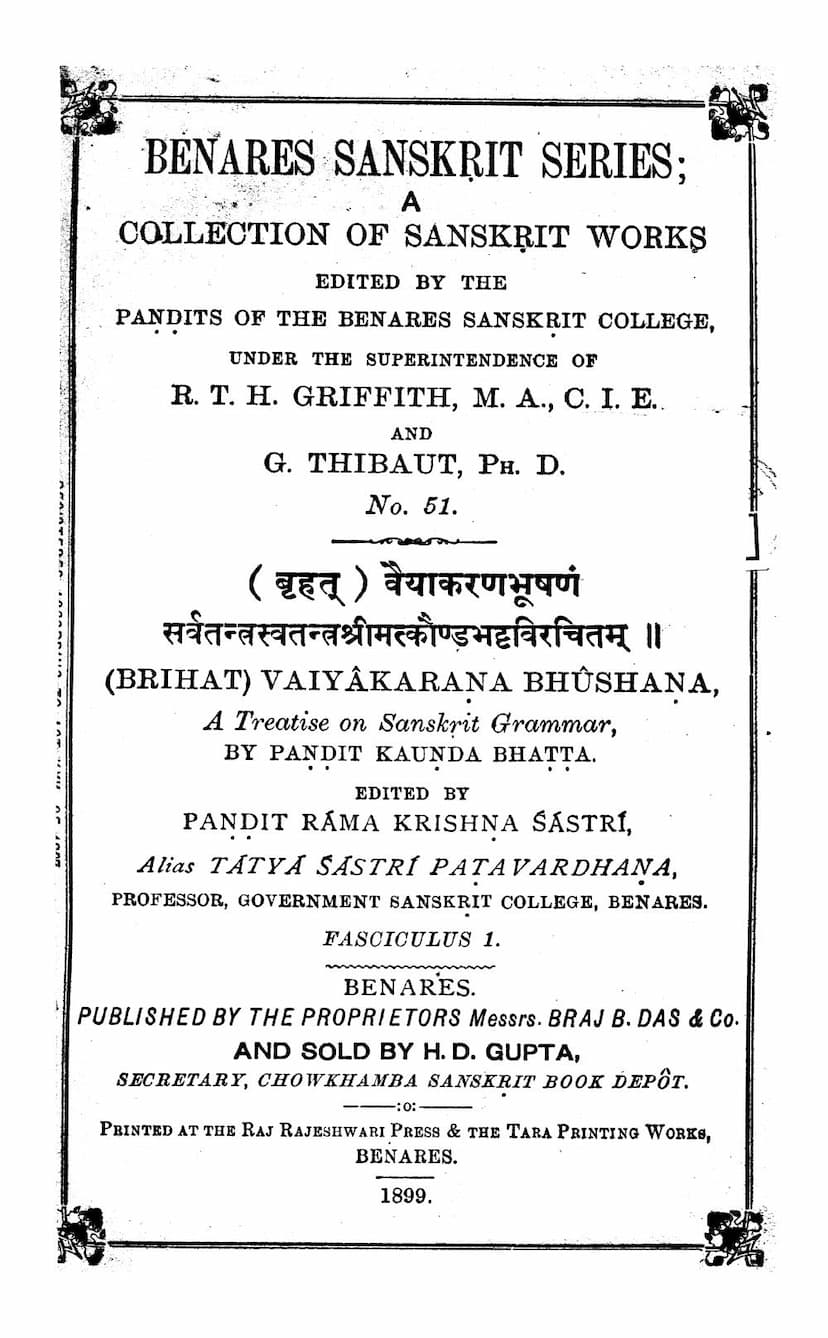Vaiyakaran Bhushanam
Added to library: September 2, 2025

Summary
This Jain text, "Brihat Vaiyakaran Bhushanam" by Pandit Kounda Bhatta, is a comprehensive treatise on Sanskrit grammar. Edited by Pandit Rama Krishna Shastri, it was published by Braj B. Das and Company as part of the Benares Sanskrit Series in 1899 and 1900.
The book aims to clarify and elucidate the principles of Sanskrit grammar, building upon earlier works like the "Bhashya" and "Kaiyata" and later ones such as "Shabda Indu Shekhar," "Shabda Ratna," and "Manorama." The author, Kounda Bhatta, is noted as the nephew of the renowned grammarian Bhattoji Dikshita.
The text delves into various aspects of grammar, including:
- The nature of verbal roots and their meanings: It discusses what constitutes a "vyapara" (activity) and how it is conveyed by verbal roots, analyzing different philosophical perspectives on this.
- The meaning of finite verb endings (Ting): It explores the role of these endings in conveying purpose, activity, and other grammatical categories, engaging with the views of logicians, Mimamsakas, and other schools of thought.
- The concept of "kriya" (action): The text debates whether action is an abstract genus or a specific instance, and how it relates to temporal aspects like present, past, and future.
- The function of verbal roots and affixes: It examines how roots and affixes together express meaning and how this contrasts with the views of Mimamsakas.
- The role of the subject and object: It discusses grammatical agreement and the concept of agency, engaging with the theories of Naiyayikas and others.
- The meaning of affixes (pratyayas): The text explores the semantic contribution of various affixes.
- The concept of "Sphota": A significant portion of the text is dedicated to the philosophical concept of Sphota, the idea that meaning resides in an indivisible sound-unit (word or sentence) rather than in individual letters or words. It examines the relationship between sound, meaning, and consciousness in understanding language.
- The meaning of nominal and verbal roots: It provides a detailed analysis of how nominal and verbal roots convey meaning and their interactions.
- The interpretation of grammatical rules and their application: The text defends its grammatical interpretations against critiques from other philosophical schools, particularly Mimamsa and Nyaya.
The editor, Rama Krishna Shastri, notes the rarity and importance of this work, mentioning his efforts in collecting and collating manuscripts to produce the published edition, aiming to make this ancient but crucial grammatical text accessible to scholars. The book also includes "Padartha Deepika" by the same author, further enriching the study of grammar and its underlying philosophical principles.